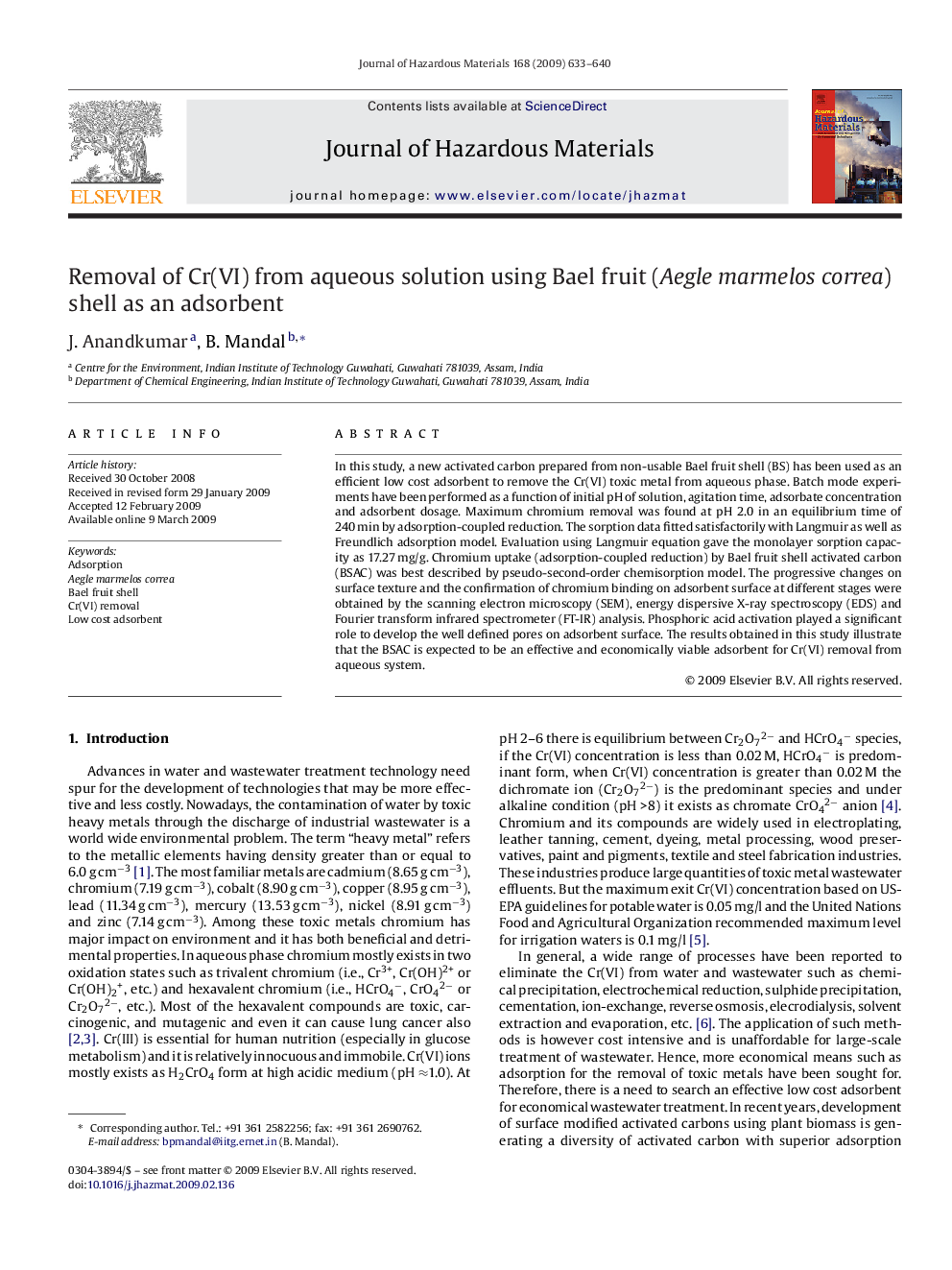| Article ID | Journal | Published Year | Pages | File Type |
|---|---|---|---|---|
| 581647 | Journal of Hazardous Materials | 2009 | 8 Pages |
Abstract
In this study, a new activated carbon prepared from non-usable Bael fruit shell (BS) has been used as an efficient low cost adsorbent to remove the Cr(VI) toxic metal from aqueous phase. Batch mode experiments have been performed as a function of initial pH of solution, agitation time, adsorbate concentration and adsorbent dosage. Maximum chromium removal was found at pH 2.0 in an equilibrium time of 240Â min by adsorption-coupled reduction. The sorption data fitted satisfactorily with Langmuir as well as Freundlich adsorption model. Evaluation using Langmuir equation gave the monolayer sorption capacity as 17.27Â mg/g. Chromium uptake (adsorption-coupled reduction) by Bael fruit shell activated carbon (BSAC) was best described by pseudo-second-order chemisorption model. The progressive changes on surface texture and the confirmation of chromium binding on adsorbent surface at different stages were obtained by the scanning electron microscopy (SEM), energy dispersive X-ray spectroscopy (EDS) and Fourier transform infrared spectrometer (FT-IR) analysis. Phosphoric acid activation played a significant role to develop the well defined pores on adsorbent surface. The results obtained in this study illustrate that the BSAC is expected to be an effective and economically viable adsorbent for Cr(VI) removal from aqueous system.
Related Topics
Physical Sciences and Engineering
Chemical Engineering
Chemical Health and Safety
Authors
J. Anandkumar, B. Mandal,
